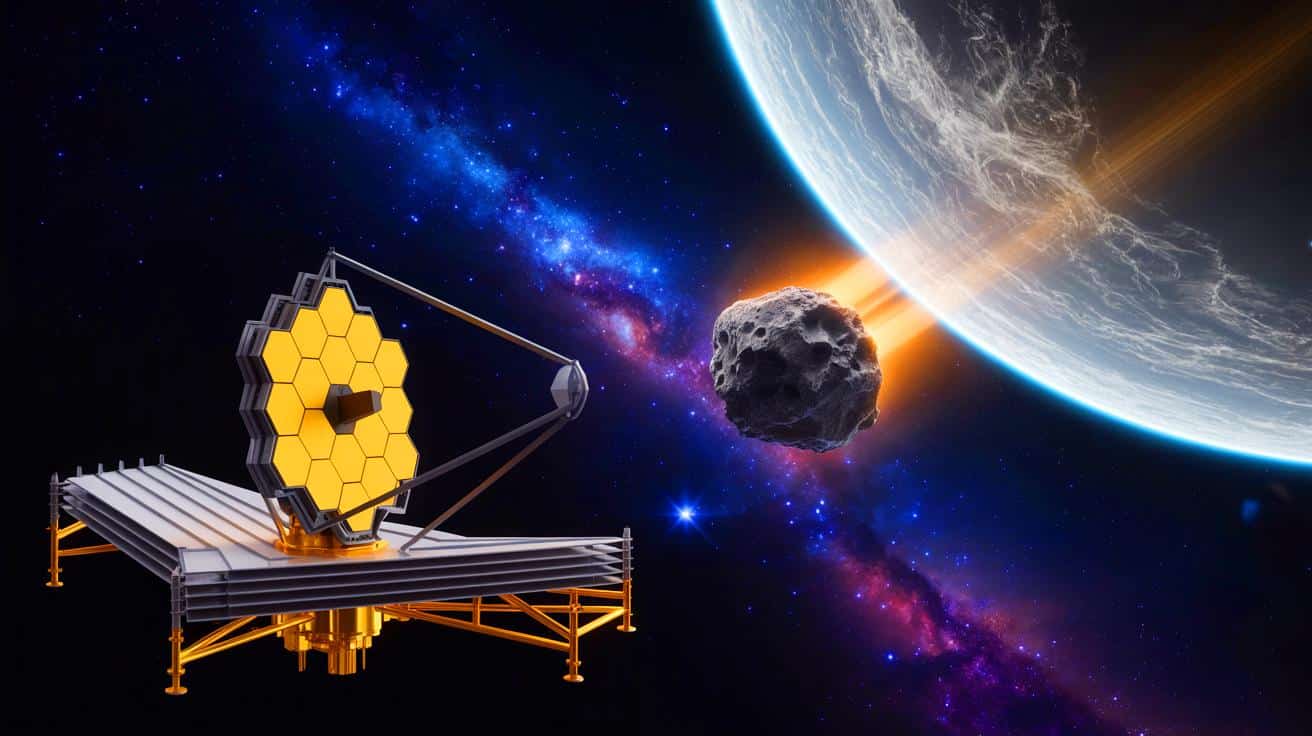| IN A NUTSHELL |
|
In the vast expanse of space, the unexpected can often disrupt our perception of a calm and static universe. Recently, NASA unveiled the discovery of a mysterious sphere hurtling through our galaxy at an astonishing speed. This sphere, detected thanks to the efforts of both professional scientists and citizen scientists, challenges our understanding of cosmic phenomena. Unlike typical celestial discoveries that rely solely on advanced telescopes, this one was first spotted by volunteers through NASA’s Backyard Worlds: Planet 9 project. The sphere’s high velocity and unusual characteristics have sparked intrigue and debate within the scientific community, raising questions about its origin and nature.
From Backyard Screens to Cosmic Speeds: How Volunteers Spotted the Mysterious Sphere
The discovery of the mysterious sphere began with NASA’s Backyard Worlds: Planet 9 project, an initiative that engages the public in the search for new celestial objects. Volunteers analyze archival images from the WISE mission, which was later reactivated as NEOWISE. Through their careful examination, three seasoned participants, Martin Kabatnik, Thomas P. Bickle, and Dan Caselden, identified an unusual, rapid glow in infrared images. Initially, the sphere appeared small and insignificant, but its movement indicated otherwise.
Traveling at a staggering speed of 1 million miles per hour, the sphere was eventually identified as CWISE J124909.08+362116.0, or CWISE J1249. This discovery highlights the valuable contributions of citizen scientists in advancing our understanding of the universe. The detection of such an object underscores the potential for collaboration between amateur astronomers and professional researchers in uncovering new cosmic phenomena.
Too Big for a Planet, Too Small for a Star: Where Does the Cosmic Fossil Fit?
Once the velocity of CWISE J1249 was confirmed, scientists faced the challenge of categorizing the object. With an estimated mass of 30,000 times that of Earth, or about 8% of the Sun’s mass, CWISE J1249 occupies a unique position in the cosmos. It is too large to be classified as a planet and too small to be considered a typical star. This places it in a gray area, prompting further investigation into its nature.
Analyzing its composition using the W. M. Keck Observatory in Hawaii, researchers discovered that CWISE J1249 contains significantly lower amounts of iron and other metals compared to conventional stars and brown dwarfs. This suggests that the object may be incredibly old, potentially formed during the first generations of stars in the Milky Way. As Dr. Darren Baskill from the University of Sussex noted, the object’s characteristics make it a true cosmic fossil, offering invaluable insights into the early evolution of our galaxy.
The Universe’s Fastest Fugitive: Supernova Kick or Black Hole Slingshot?
The remarkable speed of CWISE J1249 adds to the intrigue surrounding this cosmic anomaly. How does it move fast enough to eventually escape the Milky Way’s gravitational pull in mere tens of millions of years? Two primary hypotheses attempt to explain this phenomenon:
- The supernova scenario — CWISE J1249 might have been part of a binary system with a white dwarf, which exploded in a supernova, propelling the object into space at high velocity.
- The black hole slingshot — Alternatively, it could have originated from a globular cluster, where a close encounter with a pair of black holes flung it into interstellar space.
Dr. Baskill explains the slingshot effect as akin to a gravitational assist, where an object’s trajectory near a massive body accelerates its speed. Comparable to techniques used by space agencies to boost spacecraft velocity, CWISE J1249’s speed of 1 million miles per hour surpasses even the Parker Solar Probe, the fastest probe built by humans. This cosmic sphere outpaces our most advanced technology, leaving researchers to ponder its origin and trajectory.
Implications for Astronomy and Future Discoveries
The discovery of CWISE J1249 has significant implications for the field of astronomy. It challenges existing classification systems and provides a glimpse into the diversity of objects populating the universe. As researchers continue to study this sphere, its unique properties may lead to a deeper understanding of stellar evolution and the mechanisms driving high-velocity celestial objects.
Moreover, the involvement of citizen scientists in this discovery underscores the potential for public engagement in scientific research. By harnessing the power of crowdsourcing, projects like Backyard Worlds: Planet 9 can expand the reach and depth of astronomical exploration. This approach not only accelerates the discovery of new cosmic phenomena but also fosters a sense of participation and ownership among the public.
The discovery of CWISE J1249 serves as a reminder of the mysteries that still abound in the universe. As scientists delve deeper into understanding this enigmatic object, they are left with more questions than answers. What other secrets might the universe hold, waiting to be uncovered by the collaborative efforts of professional and citizen scientists alike?
This article is based on verified sources and supported by editorial technologies.
Did you like it? 4.5/5 (24)
Source link


